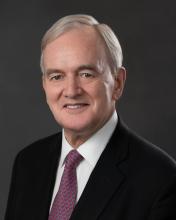You are here
Why US taxes must increase
Jul 06,2023 - Last updated at Jul 06,2023
NEW YORK — Now that the brinkmanship over the US federal debt limit has been suspended until January 1, 2025, two major, interdependent fiscal-policy challenges demand attention. First, America’s public debt must be put on a safer, more sustainable trajectory; and second, the country’s leaders need to determine the optimal size of the public sector, as measured by primary public spending (excluding interest payments) as a share of GDP.
According to the International Monetary Fund’s April 2023 Fiscal Monitor report, US general government net debt was 94.2 per cent of GDP in 2022, compared to an average of 81.6 per cent across advanced economies and a global average of 74.6 per cent. While the US net debt ratio was already elevated in 2019 (83.1 per cent), it surged to 98.3 per cent in 2020 as COVID-19, and the policy response to it, boosted the numerator and depressed the denominator. These recent figures are not only peacetime records; they also exceed the peaks at the end of World Wars I and II, when the higher ratios were rapidly eroded by (unanticipated) inflation and growth.
Fiscal policies should ensure that the net non-monetary debt of the consolidated state (including the central bank) does not exceed the present discounted value of current and future primary surpluses, including non-inflationary seigniorage. While the Federal Reserve will generate some revenues from the issuance of base money net of any interest paid on the outstanding stock of central-bank money, the seigniorage consistent with its inflation target is likely to be less than 0.5 per cent of GDP. Not even acolytes of Modern Monetary Theory could make these numbers work.
On the bright side, since the consolidated state’s net non-monetary debt reflects the gross debt minus the fair value of all financial and real assets, it could be reduced. Many of the state’s commercial real assets (including real estate) are not accounted for at all, and poor management of other assets tends to depress their fair value. The situation thus could be improved through appropriately priced privatisation or more effective asset management by a well-designed public wealth fund.
On the negative side, the state’s existing balance sheet frequently ignores the fair value of unfunded public-sector pension liabilities and other entitlement programmes. More to the point, the IMF’s forecast shows the US net debt-to-GDP ratio rising in each of the next six years as it approaches 110.5 per cent in 2028. With cyclically adjusted primary balances between -4.1 per cent and -3.4 per cent of potential GDP, this trajectory is clearly unsustainable. The time has come either to stabilise this ratio or — preferably — to bring it down materially.
The IMF estimates the US cyclically adjusted primary balance to be -4.1 per cent of potential GDP in 2023, close to its pre-COVID value of -3.7 per cent in 2019. Assuming that the interest rate on public debt will not be consistently lower than the growth rate of nominal GDP, the US needs to achieve a fiscal tightening of at least 4 per cent of GDP (for cyclical and debt-sustainability reasons). For its part, the US Department of the Treasury argues that, “Preventing the debt-to-GDP ratio from rising over the next 75 years is estimated to require some combination of spending reductions and revenue increases that amount to 4.9 per cent of GDP over the period.”
I consider the share of public spending in GDP in the US to be too low structurally, even though there are many examples of wasteful public expenditure. The sustainability-driven fiscal tightening therefore should be through higher taxes, rather than through lower public spending.
US non-interest public spending as a share of GDP is the lowest in the G7: 39.41 per cent in 2021, compared to 43.37 per cent in Canada (the median) and 57.66 per cent in France (the highest). True, America’s relatively low spending-to-GDP ratio partly reflects a low old-age dependency ratio (25.6 per cent in 2021, the lowest in the G-7, compared to 28.2 per cent in Canada and 51 per cent in Japan).
But it is more fundamentally the result of a longstanding political equilibrium that opposes “big government”, including, apparently, even spending on decent infrastructure and adequate support for the poor and needy. America’s federal structure may also be a contributing factor, insofar as it encourages tax competition, rather than spending competition, between states.
But the political equilibrium may finally be shifting, at least at the federal level. Primary federal spending fell from 28.9 per cent of GDP in 2021 to 23.2 per cent in 2022, and the Treasury Department projects that it will decrease to 19.9 per cent this year, before gradually inching back up to 23.8 per cent in 2078 (assuming all policies remain constant). Most of that future growth in spending will come from Social Security, Medicare, and Medicaid. Spending by the first two programmes will increase as the population ages; but the growth of Medicaid spending may reflect a greater willingness to engage in fiscally costly poverty-relief programmes.
Funding this desired increase in public spending requires a broad-based tax increase. The seemingly obvious solution is to introduce a federal value-added tax, and yet there may be constitutional impediments to this option (which is surprising, given that the US has a federal income tax, a federal corporate-profit tax, and federal excise taxes on gasoline, alcohol, tobacco, airline tickets, and health-related goods and services). The VAT brings in between 4 per cent of GDP in low-income developing countries and more than 7 per cent of GDP in advanced economies.
Barring a federal VAT, a broad-based increase in personal and corporate income taxes would be the next-best option. The US needs to change course to achieve public-debt sustainability, and to pay for the structural increases in spending that demographics, climate change, and intra- and intergenerational fairness will require.
Willem H. Buiter, a former chief economist at Citibank and former member of the Monetary Policy Committee of the Bank of England, is an independent economic adviser. Copyright: Project Syndicate, 2023. www.project-syndicate.org












